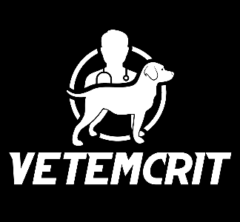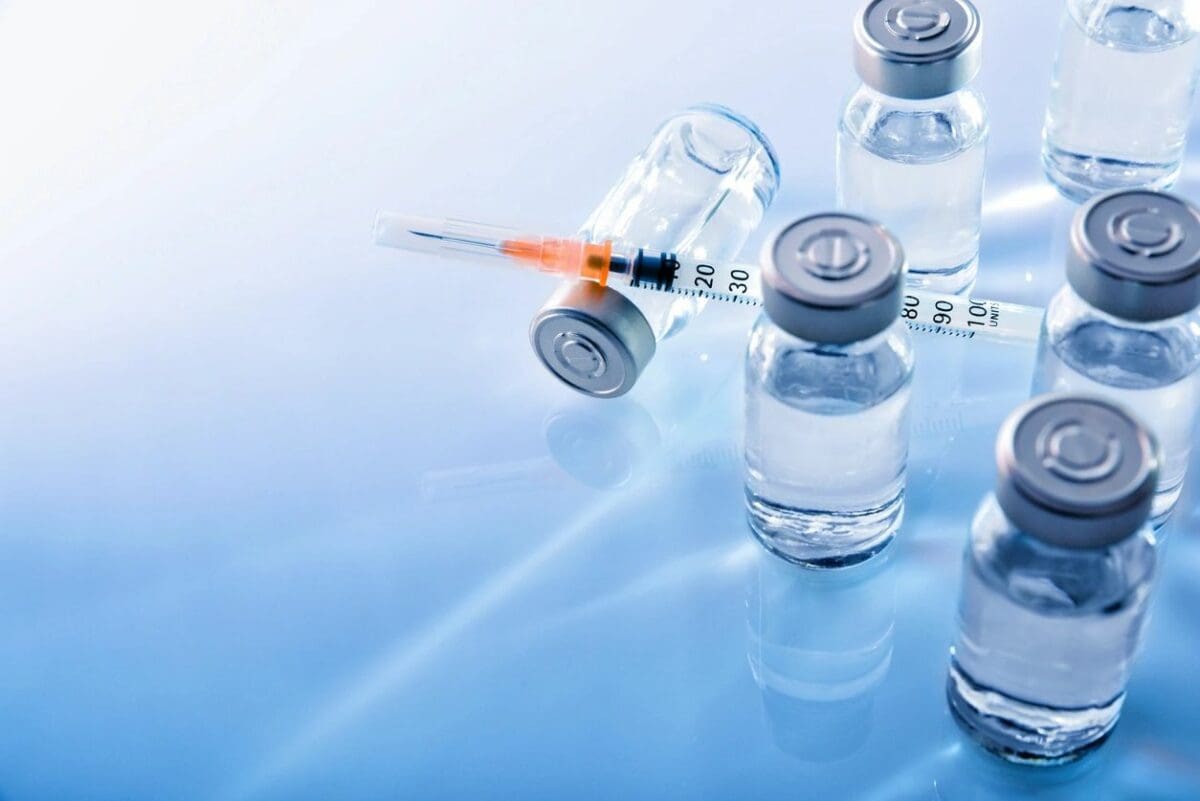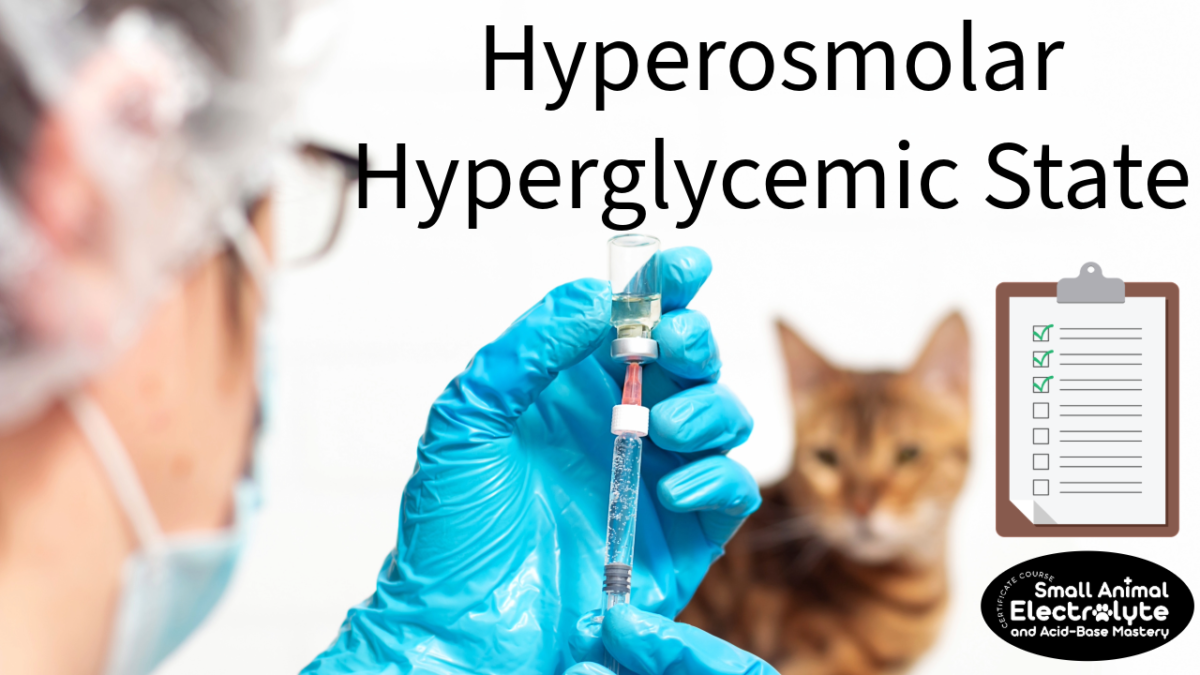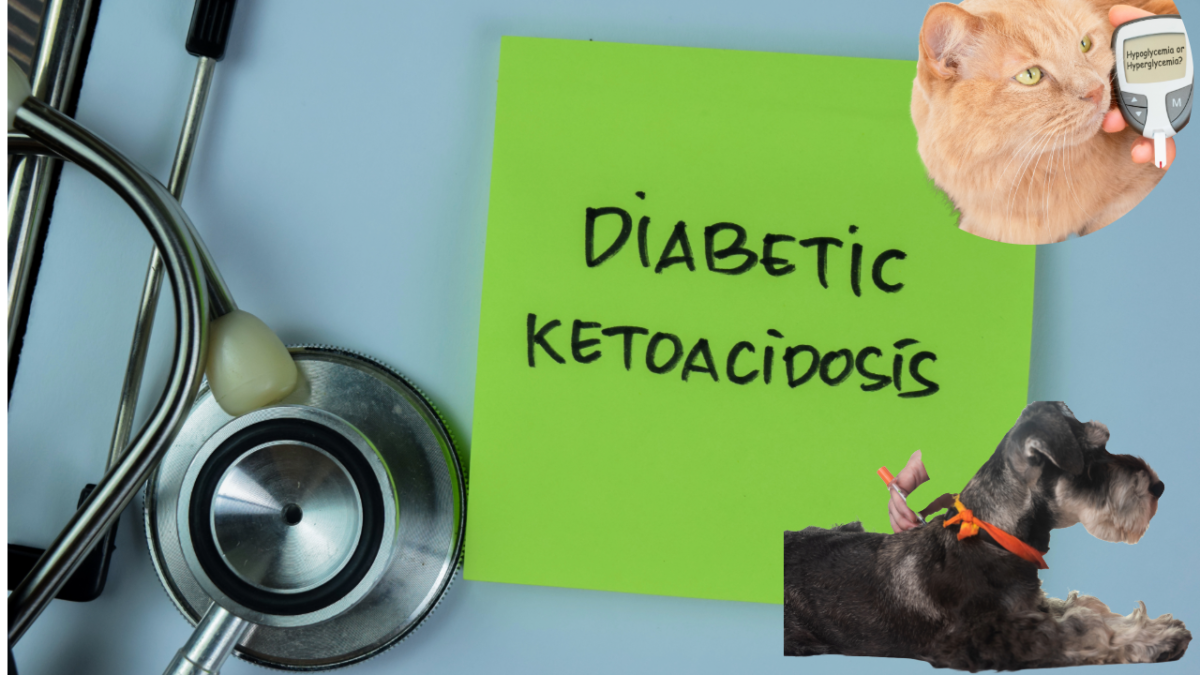A 13 year-old castrated male domestic shorthaired cat (2.72 kg) was presented to the veterinary teaching hospital emergency department for worsening lethargy and weakness. He had been recently diagnosed with diabetes mellitus and was started on PZI insulin at 1 unit twice a day. Historically, the cat was diagnosed with ocular histoplasmosis that was in remission on fluconazole treatment.
Continue reading “Ugly Twins: Combined HHS + DKA (a Feline Case Study)”Tag: Endocrine
Management of Hyperosmolar Hyperglycemic State (HHS) in Dogs and Cats: A Clinical Guideline for Small Animal Practitioners
Introduction
This guideline created by the VETEMCRIT Academy is based on the most current veterinary and human medical literature, encompassing both adult and pediatric research. It was designed as a practical clinical tool for small animal veterinary practitioners.
What is HHS?
HHS (Hyperosmolar Hyperglycemic State) is a form of diabetic crisis characterized by severe hyperglycemia (>600 mg/dL or >33 mmol/L), minimal or absent urine/plasma ketones, and serum osmolality greater than 325 mOsm/kg in dogs or 350 mOsm/kg in cats (Koenig et al. 2022).
Diabetic Ketoacidosis (DKA) and HHS are both forms of diabetic crises. They can be viewed as different manifestations along the same spectrum, as evidenced by the fact that some veterinary and human patients present with a combination of HHS and DKA.
However, there are distinct features of HHS that differentiate it from DKA. Veterinarians must be aware of these differences, as they may impact clinical management.
Continue reading “Management of Hyperosmolar Hyperglycemic State (HHS) in Dogs and Cats: A Clinical Guideline for Small Animal Practitioners”Unveiling the Mysteries of Ketone Detection in Diabetic Ketoacidosis
Diabetic ketoacidosis (DKA) is a life-threatening complication of diabetes mellitus that requires prompt diagnosis and treatment. One of the hallmarks of DKA is the presence of ketone bodies in the blood and urine. In this blog post, we’ll dive into the fascinating world of ketone detection and explore the various methods used to identify ketonemia and ketonuria in dogs and cats.
Continue reading “Unveiling the Mysteries of Ketone Detection in Diabetic Ketoacidosis”Deep dive into insulin infusion protocols for management of diabetic ketoacidosis in dogs and cats
Diabetic ketoacidosis (DKA) is a relatively common complication of diabetes mellitus in dogs and cats. In the face of insulin deficiency or resistance, the liver produces ketones to provide an alternative energy source from glucose. However, excessive ketone production can lead to high anion gap metabolic acidosis and other negative effects. Besides restoration of intravascular and interstitial fluid deficits as well as electrolyte derangements such as hypokalemia, insulin administration is necessary to stop production of ketones, reduce lipolysis and enhance cellular uptake of glucose.
Several insulin protocols have been described in veterinary medicine to treat DKA patients during the first 24-72 hours of hospitalization until the patient becomes stable and regains appetite. One of the most commonly utilized protocols in clinical practice is an intravenous variable-rate insulin infusion protocol when a short-acting insulin is infused IV and the rate is altered based on blood glucose concentration (Figure 1).
Continue reading “Deep dive into insulin infusion protocols for management of diabetic ketoacidosis in dogs and cats”



